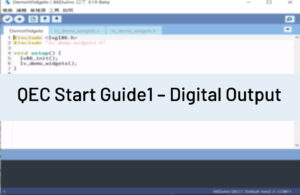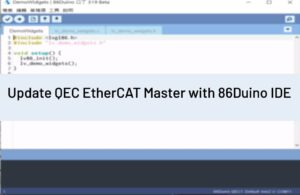[Bitwise Operators]
Description
The bitwise AND operator in C++ is a single ampersand &, used between two other integer expressions. Bitwise AND operates on each bit position of the surrounding expressions independently, according to this rule: if both input bits are 1, the resulting output is 1, otherwise the output is 0.
Another way of expressing this is:
0 0 1 1 operand1 0 1 0 1 operand2 ---------- 0 0 0 1 (operand1 & operand2) - returned result
In 86Duino, the type int is a 32-bit value, so using & between two int expressions causes 32 simultaneous AND operations to occur.
Example Code
In a code fragment like:
int a = 92; // in binary: 00000000000000000000000001011100 int b = 101; // in binary: 00000000000000000000000001100101 int c = a & b; // result: 00000000000000000000000001000100, or 68 in decimal.
Each of the 32 bits in a and b are processed by using the bitwise AND, and all 32 resulting bits are stored in c, resulting in the value 01000100 in binary, which is 68 in decimal.
One of the most common uses of bitwise AND is to select a particular bit (or bits) from an integer value, often called masking.
PORTD = PORTD & 0b00000011; // clear out bits 2 - 7, leave pins PD0 and PD1 untouched (xx & 11 == xx)
See also
- [Language] && Logical AND
- [Example] BitMath Tutorial
Language Reference Home
The text of the 86Duino reference is a modification of the Arduino reference and is licensed under a Creative Commons Attribution-ShareAlike 3.0 License. Code samples in the reference are released into the public domain.



